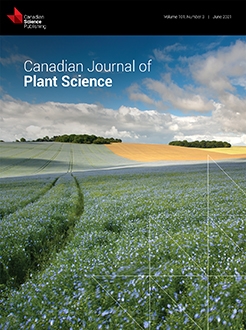Yield and quality of chestnut (Castanea mollissima Blume) are affected by nitrogen (N) availability; however, there are few reports on foliar and root absorption of different chemical forms of N in chestnut. To analyze the absorption characteristics of exogenous N fertilizer labeled by 15N in chestnut, nitrate and ammonium nitrogen uptake and allocation were determined in 1-yr-old seedlings that received soil and foliar 15NH4NO3 and NH415NO3. We found that 29% of the nitrate and 25% of the ammonium absorbed by the leaves were translocated to the roots, while 62.01% of the nitrate and 63.27% of the ammonium absorbed by the roots were translocated to the shoots. The seedlings absorbed more nitrate nitrogen than ammonium nitrogen, and their foliar N uptake was faster than their root uptake. Most of the N absorbed by the seedlings was fixed in the shoots in both foliar and soil uptake. The proportion of N fixed was greater in seedlings subjected to foliar fertilization than in those treated with soil fertilizer. Foliar fertilizer application can meet the N nutritional needs of fast-growing shoots more effectively than soil fertilizer application; however, soil fertilization was a better long-term N source than foliar fertilization. Thus, ensuring an adequate supply of nitrate N fertilizer in the soil accompanied by a commensurate increase in foliar fertilizer application can effectively meet the nutrient requirements associated with the rapid growth of chestnut seedling shoots.
How to translate text using browser tools
16 October 2020
Exogenous nitrogen uptake and allocation in chestnut
Cheng Xu,
Sujuan Guo,
Jing Wang
ACCESS THE FULL ARTICLE
It is not available for individual sale.
This article is only available to subscribers.
It is not available for individual sale.
It is not available for individual sale.

Canadian Journal of Plant Science
Vol. 101 • No. 3
June 2021
Vol. 101 • No. 3
June 2021
15N
ammonium nitrogen
chestnut (Castanea mollissima Blume)
foliar fertilizer
nitrate nitrogen
soil fertilizer




